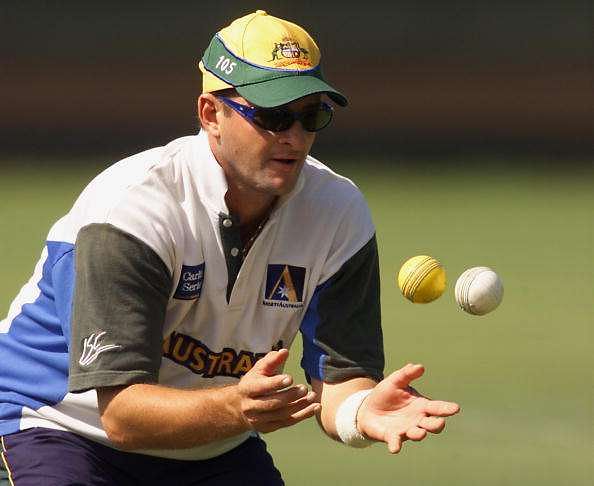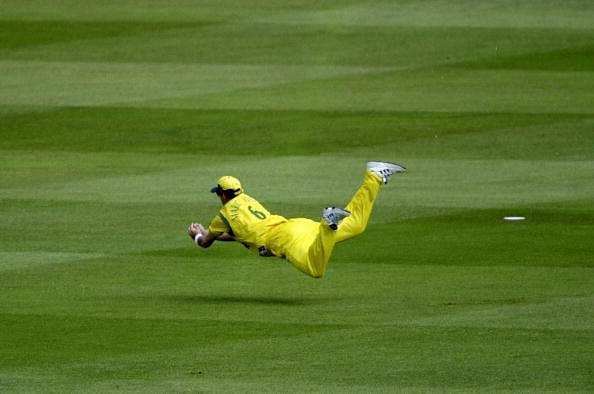
Why did Mark Waugh excel as a slip fielder?

It was the final of the 1999 ICC World Cup and Australia got off to a great start courtesy a superb diving catch in the slips by Mark Waugh, setting the tone for Pakistan’s downfall that culminated with Australia going on to lift the coveted trophy. Earlier in the tournament, Herschelle Gibbs dropped a sitter off Steve Waugh that prompted the Aussie skipper to say that “You’ve just dropped the World Cup mate”.
That dropped chance allowed Waugh to go on to complete a match-winning century that later proved to be the reason for South Africa’s exit from the tournament. The relevance of the proverb ‘catches win matches’ cannot be better explained.
Also read: Cricket's greatest comebacks: Australia vs South Africa, 1999 World Cup (Super Sixes)
When the topic of slip fielding arises, Mark Waugh’s name would be right up there with the very best for the job. The ‘junior’ of the twin Waugh brothers, Mark was considered to have the safest pair of hands on the field and it was no surprise when cricket pundits exclaimed, “If it went to Waugh, it would be caught.” His 181 catches in 128 Test matches are a testimony to the extraordinary skill and technique he possessed that made him master the art of slip catching.
A natural slip fielder
Waugh believed that slip catching came naturally to a fielder and that it could not be taught. However, any cricket academy teaching youngsters to catch a ball in the slips could have no better example than Mark Waugh. A good stance is the first requirement for a safe slip fielder. Mark had a beautiful stance with his feet shoulder-width apart.
A wider stance lowers the centre of gravity of the body which hinders lateral movement and thus Waugh preferred a narrow stance. This ensured he could flexibly move his centre of gravity outside the base of his support very quickly, enabling swift lateral movement for wider catches. Seeing him standing in the slips gave an impression of how comfortable he was there.
Stiffness is the worst enemy for a slip catcher and Mark was far from it. His body posture exuded a fluidity that allowed his lower body to change direction with the ball and provide balance to the whole structure while the upper portion took care of the impact of the ball never letting any chance go down. It all seemed fed into a system with each body part aware of what had to be done when the leather came flying towards him.
Another thing one can notice by closely observing how he caught the ball was that he made sure that his preferred hand, which in his case was his right hand, took the major impact of the ball and the left one lent support. Some players are blessed with big bucket like hands that can gobble up anything but Mark instead made sure he wrapped his mid-sized hands completely around the ball. It never looked he could drop a catch.

Soft hands are a prized possession for a person catching in the slips. Soft hands are essential as they allow absorbing the impact with which the ball strikes the hands. On the other hand, hard hands would mean that much more effort and difficulty in catching the ball cleanly. It is the example which physics teachers give while explaining the concept of ‘impulse’.
More often than not we have seen great batsmen turn out to be superb catchers behind the wicket. Be it the case of Rahul Dravid (210 test catches), Mark Taylor (157 test catches) or Mahela Jayawardene (205 test catches), all of whom have been the best batsmen of their era and at the same time been the most dependable persons in the slip cordon. Same was the case with Mark Waugh.
Concentration is key for success
To be a successful test batsman one requires immense concentration skills, patience and technique. To stand for hours on the field with long periods of inactivity and then convert a sudden edge requires a lot of concentration. Waugh said that he was used to switching off during such periods and yet be right on the button when a chance presented itself, never letting his bowler down. Slip fielders talk amongst themselves and more than half of what they converse is not related to the on-field activities.
Dravid once said when asked about switching off between deliveries, “Me and Laxman talk about kids, house construction, plumbers, electricians, running errands. That keeps you focused, keeps you relaxed.” Waugh’s exemplary hand-eye coordination while batting helped him a great deal in the slips as well. Also, he was described to have a lazy elegance with the bat in hand and this contributed in his relaxed mind while fielding in the tensed slip cordon.
He said, “Don’t try and catch the ball, let the ball catch you.” A relaxed mind was of greater importance when a fielder has spilt a catch he was expected to pouch. Waugh hardly let himself get affected if he ever missed a chance. He was sure of his abilities and did not read much into rare blimps.
Apart from these factors the fact that the Aussies are fierce competitors and great strategists of the game helped every team member. They have always been considered one of the better fielding sides in the cricketing fraternity. They have plans and field positioning which vary with the conditions on offer and the batsmen as well. In case the batsman was someone who would flash hard at the ball, the slip cordon would stay a step behind. Waugh said that he hardly practiced on match days as more of it could lead it sore hands.
Mark Waugh held the record for the most number of Test catches from 2001 to 2009 till Dravid went past him and Sir Ian Botham was not wrong when he called him the ‘fielder who can catch pigeons’. He made slip catching look very easy and will always be the first name when great slip catchers are talked about.